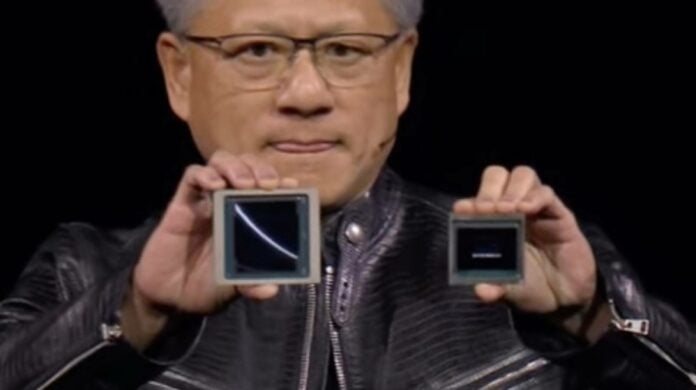Nvidia has encountered some trouble with its latest Blackwell GPUs, and it’s supposedly big enough to postpone the launch. Spotting design flaws, Team Green has delayed its flagship graphics cards by up to three months.
Completing the trifecta following Intel’s processor issues and AMD’s Ryzen 9000 delay, it’s Nvidia’s turn to announce bad news. According to Bloomberg, Nvidia’s Blackwell AI GPUs will be delayed by about three months due to design flaws. This means that their initial launch will be pushed from Q4 2024 to Q1 2025.
Google, Meta, Microsoft, and xAI will have to wait longer to get their orders which may hamper their AI developments. At least the backlog of H100 GPUs should be filled sooner, as the Green Team plans to delegate some of its production to Intel fabs.
These flaws were likely discovered on early B100 and B200 engineering samples Nvidia sent to its customers. While we don’t know the exact issue, it seems important enough to delay the launch. What’s sure is that a delay is better than having to deal with a massive recall and a hit to brand reputation.
Needless to say, this is a big setback for such huge customers, as everyone is rushing to release new AIs to bank on the ongoing hype. For perspective, Microsoft, Meta, and xAI alone account for some 300,000 B200 orders. With $70,000 apiece or $3,000,000 for complete server racks, you can easily see why no mistake is permitted. After all, brand confidence is an important factor for large customers like these.
Though such a delay could mean huge losses as customers turn to competing products, Nvidia is lucky to be the only one offering such a level of performance in the data centre market. That said, the Green Team can’t afford many delays, as several others, including Google, are developing dedicated AI chips, which could come eat its market share. Following this news, Nvidia’s share price dropped 14%, though it is already starting to recover.
While we don’t know if this problem concerns desktop gaming GPUs, they also may be delayed since Nvidia is likely to use its TSMC N4P node capacity to make its high-margin server GPUs first. So, brace yourselves for a wait, just in case.


